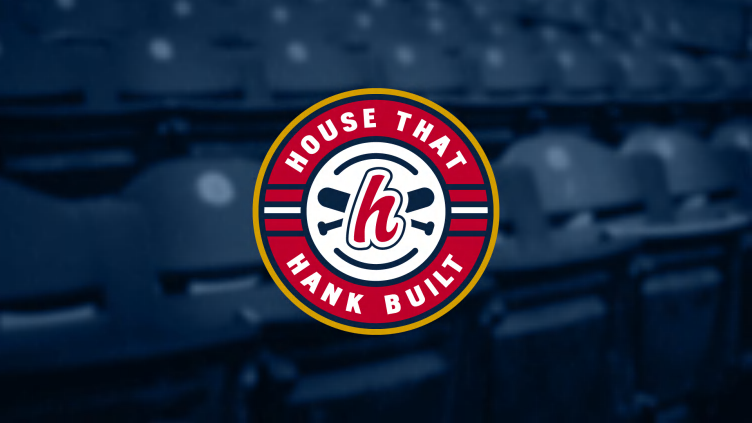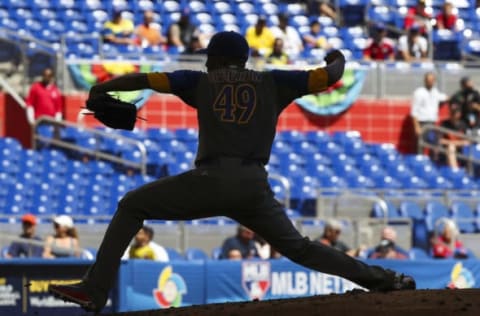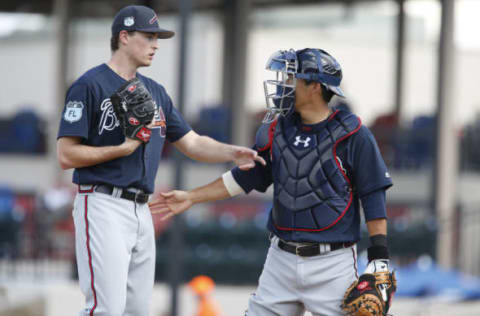Atlanta Braves Trying Hard to Beat the Math


Fangraphs recently spoke with Braves President John Hart. The subject was … philosophy. That conversation provides some interesting insights.
What are the Atlanta Braves doing with this rebuild? What is the plan? What are the underlying assumptions and guiding principles?
Those are the questions are the heart of this interview Travis Sawchik of Fangraphs had with Braves’ President of Baseball Operations John Hart. The full story is available here, and I recommend it to you.
This is not Hart first rebuild rodeo. It’s not even his second. The Braves represent his third attempt to bring a team from the ashes to the altar of baseball dominance, with previous work guiding the mid-90’s Indians and the 2001+ Rangers.
The principles have been tweaked a bit and certainly circumstances in the marketplace have changed, but the Braves are following the 2009+ Pittsburgh script of stockpiling pitching that Hart noted of their Pirates GM Neal Huntington while an MLB Network Analyst.
I know – that’s a shock to anyone paying even casual attention. But it’s because the organization has been trying out a few new wrinkles in an effort to beat the math.
This is the math telling us in multiple studies on the subject that pitching prospects will fail a lot more often than not. 77.4% of the time for “Top 100” pitching prospects according to one study (1990-2003), and 77.5% in a different look extending the time from 1990 to 2006. [again: Fangraphs sourced materials]
The silver lining suggests that the “premium” prospects (1-20) saw their fail rates (a harsh-sounding term, but generally is marked by major league successes) drop to 51.7%. Still no better than one out of every pair of pitchers.
Hart himself has figured that only 1 out of every 5 pitchers is marked for ultimate success, so he’s even slightly more pessimistic than the study data… but also well-grounded on the expectations he maintains for his own players coming through the ranks.
For sure, position players “bust” also, but at a 66% clip. So you might wonder this: why not go for the better odds?

The Evil Genius Plan
Atlanta is evidently banking on a few things working together in tandem:
- Most teams do not opt to stockpile pitching – via the draft or any other method. Ergo, when their prospects bust, an instant “need” is created.
- The Braves are targeting the high-upside players – trying to get closer to that 52% rate instead of the 77% rate.
- They are going after high school pitchers more often – those with less wear on their arms already – in another attempt to lower the risk. Even their college selections have not been high-inning pitchers.
- Mike Soroka and Ian Anderson are both examples of this philosophy. Both high schoolers, but also both from cold-weather climates… less time to play and a bit under-the-radar for most teams.
- Even their Tommy-John survivors have ‘high-upside’ written all over them. Combine that with the Braves significantly slowing their rehab times and allowing the injury to fully heal and that – they hope – continues to lower the risks involved.
Sure – some aspects of this will work better than others. Some – many – of these players will still “fail” in some manner. But keep this in mind: it’s about quantity and odds, not about one single player.
In short, if you have 8 prospect pitchers and 6 fail, then you’ve only got 2 remaining to work with and you still have to fill out a five-man rotation.
However, if you have 20 prospect pitchers while working hard to reduce the failure rates, then you could end up with at least 5 good ones, and maybe a couple more.
Now you’re ahead of the game.
That is what the Braves are trying to accomplish.

Trade Philosophies
Now let’s look at trading pitchers.
The Braves are probably as keenly aware as any team about how rare a commodity Julio Teheran is. Ditto about someone of the ilk of Jose Quintana, for that matter.
If 4 out of 5 prospect pitchers ‘bust’, then pitchers like these Colombians must be at least a 1-out-of-25 occurrence.
So how do you value your own prospects – especially those at the lower levels – when trying to make offers for such a pitcher? Especially while the Braves are trying to turn the math on its ear?
The White Sox, for their part, know what they’ve got and they also expect big failure rates in any group of pitchers that might be offered up by any trade suitor.
The Braves, while operating from this new playbook, don’t yet have a track record to be able to demonstrate success, and thus they cannot claim “Pitcher X is a Can’t Miss guy”… which is what the White Sox must reasonably have in return for Quintana.
If the Braves truly believe their ideas represent a roadmap to future success, then almost anything acceptable to the White Sox for Quintana will feel like an overpay since the Braves might feel that several of their Top Tier arms ‘might’ work out.
Conversely, the Sox can’t assume that anything is a good bet, and that’s why they want only the premium cuts of beef from any other club’s farm. Certainly, their fans will hold their feet to the fire for that once Quintana is ultimately dealt.
More from Tomahawk Take
- Braves News: Braves 2023 rotation speculation, Correa deal on hold, more
- Atlanta Braves: Current Left Field Mix
- Atlanta Braves 2023 Preseason Top 30 Prospects List: 11-15
- Braves News: Braves sign Luplow, Atlanta’s shortstop plans, more
- Atlanta Braves Could Go With Six-Man Rotation in 2023
This is also why the Cardinals/Braves trade to get Jaime Garcia made sense. St. Louis had what they believed to be a surplus arm in Garcia, and were fine with getting a pair of ‘next tier’ Wild Cards back in John Gant and Chris Ellis (along with Luke Dykstra).
The Cards didn’t need to be assured of ultimate success, so they went with (a) the payroll reduction; and (b) lottery tickets. And it turns out that Gant is now probably 6th or so on their rotation depth chart now, so that works for them (1.64 Spring ERA/0.73 WHIP in 11 innings!).
Good for Gant; good for the Cardinals; and good for Atlanta.
These are examples. This is not intended to stir up debate on the rightness or wrongness of trading anyone at this point. It’s much more about the plan to beat the odds of failure that is being employed.
That said, certainly the Braves have some extra considerations to think about when they are adding up the potential that their prospect pitchers might have going for them.
But until a track record can be established that verifies and is recognized by future trading partners, then Atlanta will have to pick their spots and be cautious with using the ‘value’ they believe they have.
Next: We Crave Sustenance! And This Stuff!
Seems that might be exactly what’s going on now.